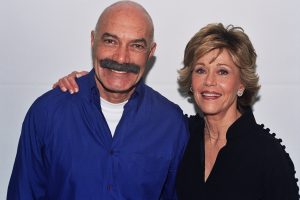In the first year, Academy voters were asked to display “rare discrimination and honest judgment” in their choices.
Members were advised “to evince equal discrimination so that the final awards may be fairly representative of the industry’s opinion of its best achievements.”
After the second ceremonies, the Academy Board was proud to report that “so far, there has been no evidence of studio politics,” and that producers have “freely nominated pictures from studios other than their own.” However, as David O. Selznick once noted, the Academy was always “influenced unduly by transient tastes, by commercial success, by studio logrolling and by personal popularity in the community of Hollywood.”
Both the nominations and final voting have been prejudiced by the studios’ ad campaigns, even though there was always ambivalence toward outright politicking for a particular studio’s movies and artists. Back in the studio system, ads were considered to be a violation of fair, dispassionate selection procedures. However, those in favor of ad campaigns claim that politicking is not unique or confined to the Oscar, that even the more esoteric and prestigious Nobel Prize is subject to extensive campaigning by scientists, both formal and informal. Still, the difference is that campaigns for the Nobel Prize are conducted by peers, whereas campaigns for Oscars are guided by the studios and the artists themselves.
Filmmakers campaign for their movies due to the fact that the Oscar has become a legitimate measure of evaluating screen careers. Studios, directors, and actors gauge their careers in terms of the number of Oscar nominations and awards they receive. Independent producer David O. Selznick was proud to proclaim that his films had received collectively thirty’six nominations and that two, Gone With the Wind and Rebecca, won the Best Picture.
The major studios have the resources and facilities to carry out sophisticated and effective campaigns on behalf of their movies. The studios’ publicity departments could make stars out of contract players, sell their movies to the public, and persuade members to vote for their pictures. Not to be forgotten is that the Academy began its existence as a guildbusting company union, led by the strongest studio, MGM. Louis B. Mayer, who ruled MGM for two decades, was one of the Academy’s charter founders and instrumental in drafting its goals and recruiting its members.
During his reign, MGM received more than its fair share of nominations and awards. In the first decade, MGM earned a total of 153 nominations and 33 awards, a record surpassing that of other studios. Paramount ranked a distant second, with 102 nominations and 18 awards, followed by Warner, with 71 nominations and 15 awards. Fox and Columbia featured poorly, the former with 54 nominations and 13 awards, the latter with 43 nominations and 10 awards.
Between 1927-8 and 1939, of the 102 Best Picture nominees, 28 were produced by MGM, 17 by Paramount, 10 by Twentieth Century-Fox, 15 by Warner, 8 by Columbia, 7 by RKO, and 4 each by United Artists and Universal. Only three of the nominees were produced outside Hollywood, the Britishmade The Private Life of Henry VIII and Pygmalion, and the French Grand Illusion. Independent producers justifiably complained that their movies stood little chance of being nominated. Samuel Goldwyn had only four films (Arrowsmith, Dodsworth, Dead End, and Wuthering Heights), and Selznick two (A Star Is Born and Gone With the Wind).
MGM’s defenders claim that in the 1930s the studio produced more films than any other studio, and that MGM also made better films. What they mean is that MGM made films that were more suitable for winning Oscars. Of the first twelve Best Pictures, MGM made four: The Broadway Melody, Grand Hotel, Mutiny on the Bounty, and The Great Ziegfeld; Gone With the Wind was released by MGM, but was a Selznick production.
In the 1930s, MGM had at least two films nominated for Best Picture every year, and later in the decade even more. In 1936, no fewer than five MGM films competed for the Best Picture: The Great Ziegfeld, which won, Libeled Lady, Romeo and Juliet, San Francisco, and A Tale of Two Cities.
MGM also dominated the acting Oscars: ten out of the twenty Best Actors and Best Actresses were given to MGM players, including Norma Shearer, Marie Dressler, Helen Hayes, and Luise Rainer (in 1936 and 1937) among the women, and Lionel Barrymore, Wallace Beery, Spencer Tracy (in 1937 and 1938), and Robert Donat among the men.










